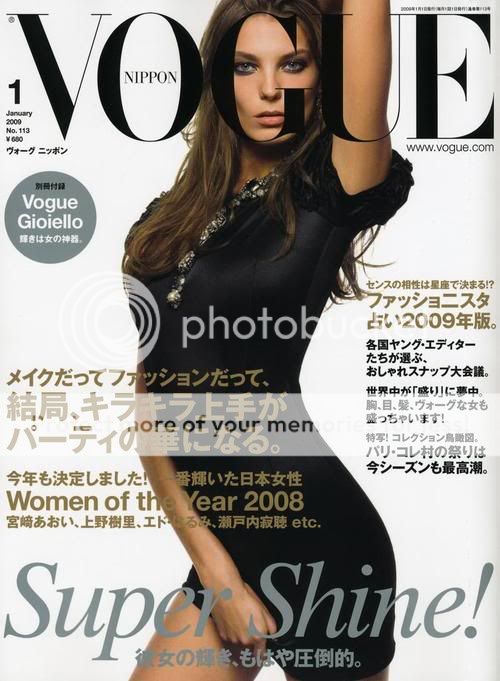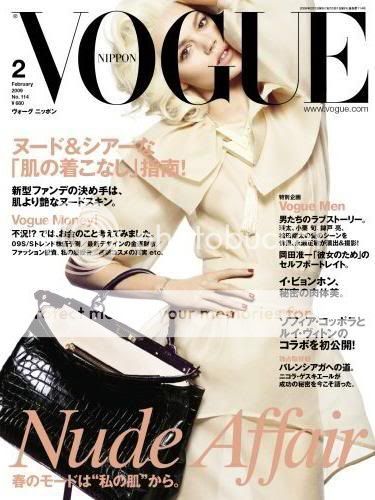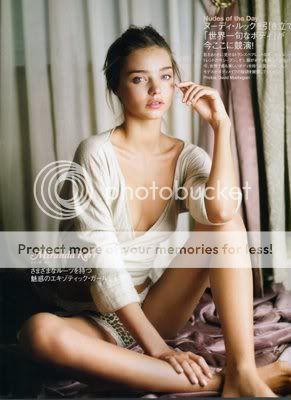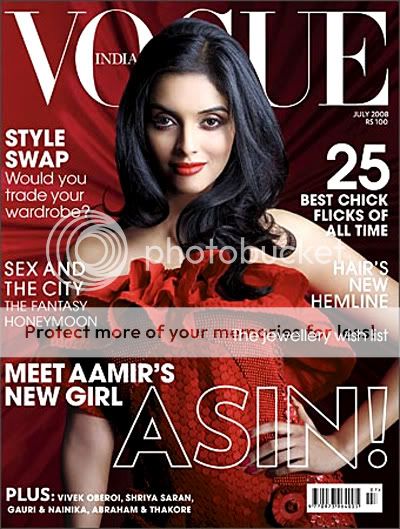I’ve mentioned before Matt Thorn’s great article about why characters in Japanese manga are not, in fact, meant to represent, or even to suggest, Westerners, despite those round eyes.
Japan, however, is not and never has been a European-dominated society. The Japanese are not Other within their own borders, and therefore drawn (or painted or sculpted) representations of, by and for Japanese do not, as a rule, include stereotyped racial markers. A circle with two dots for eyes and a line for a mouth is, by default, Japanese.
It should come as no surprise, then, that Japanese readers should have no trouble accepting the stylized characters in manga, with their small jaws, all but nonexistent noses, and famously enormous eyes as “Japanese.” Unless the characters are clearly identified as foreign, Japanese readers see them as Japanese, and it would never occur to most readers that they might be otherwise, regardless of whether non-Japanese observers think the characters look Japanese or not.
… the notion that the Japanese harbor an inferiority complex vis-a-vis the White West seems to me based on the largely unconscious assumption that non-Western peoples envy the West, and more specifically on the American fantasy that everyone in the world naturally wants to be American. Of course, the scholars and intellectuals who note such tendencies in Japan do not applaud it; on the contrary, they cluck their tongues and wring their hands and wish loudly that the Japanese would shun the temptations of the West and remain true to and proud of their heritage. But the eagerness with which they seek out evidence of a desire to be “white,” and the stubbornness with which they ignore evidence to the contrary, suggests to me that their apprehension of social reality is heavily filtered through an unintended ethnocentrism.
Matt points out, among other things, that the characters in the comic are stylized; they don’t look all that much like people of any ethnicity. Definitely read the whole thing if you haven’t already. I found it very convincing.
And yet….well, look at this:
That’s the cover of Japanese Vogue from January, purchased on ebay by my fashion-magazine-obsessed-significant other. Probably the first thing you’ll notice in the picture above is that the woman is clutching her crotch. After that, though, you might observe that she’s not Japanese. Furthermore:
All the covers from Japanese Vogue I found seem to feature Westerners. Most of the interior pictures do too.
(And for those wondering, no, all foreign issues of Vogue don’t feature Western models. Indian Vogue is mostly devoted to Bollywood, for example.)
Obviously, none of this refutes Matt’s argument about manga. And Japan (as my significant other pointed out) is something of a mecca for magazines; there are far more per capita than there are in the U.S., and the vast majority of them feature Japanese models. Maybe Vogue just uses Western models because it has overseas connections, and it helps it stand out on the shelves? Still, it’s hard not to conclude that there’s some suggestion here that the Japanese are taking beauty standards and beauty cues from Western models. It seems, anyway, a little more thoroughgoing than the Western fetishization of Asian women, which definitely exists, but probably wouldn’t be indulged quite so exclusively in an entire mainstream publication.
I don’t know. Anybody have other thoughts? Like maybe Bill, or somebody else who, unlike me, actually knows something about Japan?
Update: Pallas in comments points me to this fascinating link by W. David Marx about Japanese fashion magazines. Here’s part of what he says:
High-end fashion magazines, on the other hand, mostly feature clothing from European houses and luxury brands, pegging the center of legitimacy in the West. In order to ensure that the presentation harks back to the larger Eurocentric fashion world, magazines like Spur or Ginza — almost without exception — use non-Japanese and mostly Caucasian models. This prevents Japanese female readers from self-association, but that’s the point. Like the old Groucho Marx quote, “I don’t care to belong to any club that will have me as a member,” Japanese high-fashion fans do not want to see the clothes they desire on real-life Japanese people. There may be a tad bit of self-effacement in this sentiment, but it generally questions more elite Japanese consumers’ feelings about their own locale. The fantasy, therefore, requires a staff of non-Japanese models.
ViVi and Glamorous‘ overwhelming use of half-Japanese and three-quarters-Japanese models like Fujii Rina, Hasegawa Jun, and Iwahori Seri begs a more pointed question: what does race mean when it’s not a pure reflection of either here nor there? These magazines are not targeting some massive half-Japanese readership, nor do these models look foreign enough to recenter the magazine atmosphere outside of Japan.
Herein lies lingering issues of perceived racial inferiority. I’ve been told numerous times in Japan that “clothes look better on foreigners,” by which they mean “white or black people.” This is not objectively true (nor subjectively true, in my view), but editors have long used half-Japanese models on this principle to bridge the gap between Japanese self-association and cool “foreign” fashion. A half-Japanese model looks “foreign” enough to enhance the image of the clothing, but close enough to the reader to send a message of commonality. Things are changing, however. Male fashion magazine Popeye previously used only half-Japanese models but moved to more foreigners once readers voiced less need for racial similarity in considering the clothing.
So that would be at least a qualified vote for some level of “lingering issues of racial inferiority.” Though, again, that doesn’t mean that such lingering issues are reflected in manga iconography, necessarily.
Update 2: I just wanted to point out as well: Matt says that Japan “never has been a European dominated society.” That’s not true, if Europe includes America. Post-war Japan was absolutely American dominated. It was occupied; it’s government was restructured; cultural changes were handed down by fiat; etc. etc. Admittedly, that all took a relatively brief amount of time compared to the experience of a long-time colonial possession like, say, India. Still, it was pretty important, and had long-term consequences, both structural and, I would assume, psychological. To say that Japan was never under Western domination is not a supportable statement, I don’t think.
Update: And I’ve got a follow up post here







I don’t have an opinion, but here’s some Vogue info for you.
Vogue Nippon is at least 60% Western models, and it’s probably closer to about 85%. I’d give you exact numbers, but I don’t really feel like counting the issues in the library. That’s including content. The only two issues of Vogue Hommes Nippon I’ve seen are white guy covers, mostly white guy interiors.
Vogue China on the other hand-that’s closer to half and half, with Chinese models/celebrities taken the higher portion. Interior has similar breakdown.
Vogue Italia/India, those are predominately based in the area. Italia is also one that I know can rely on actual newsstand/subscription income as opposed to advertising. I know regular Vogue can’t, but it doesn’t really behave like the others either, with celebrity covers usually beating out model covers. I don’t know about the rest of them.
There’s a couple of others too–Vouge Russia or whatever it’s called. I couldn’t tell you on that, although they all look like sickly white women.
Oh, and if your wife got the Gioiello supplement with Vogue Nippon, I handled a tiny bit of the copy in there, although I doubt you’ll find it. It’s near a dead fish picture.
I haven’t seen Vogue China. Vogue Russia actually looks like they use a lot of local models, though it’s difficult to know for sure what with the language barrier.
Marcy claims that Vogue Korea is supposed to be the best of the bunch, though she hasn’t managed to obtain a copy. American Vogue is universally panned among the people who care about this sort of thing, apparently.
I’ll tell Marcy you do work for Japanese Vogue. She’ll be suitably impressed.
Good God, Noah, I’m watching a webcam of a door in Memphis to see if Calipari's my new coach and you pull me away for fashion frivolity?
Here's all I know about J-fashion mags:
1. Modeling work is apparently not hard to come by for whites in Tokyo, though probably not on the level of Vogue.
2. Donald Richie has a 2003 book about Japanese fashion & trends called "The Image Factory." It's okay.
3. I outsource all my thinking about fashion & advertising discussion to David Marx AKA Marxy, a whip-smart academic/DJ/rocker who lives in Tokyo and blogged at Neomarxisme and now journals with some other folk at Neojaponisme. His piece on Ebi-chan, a recent “It” Girl and face of the magazine CamCam, is pretty instructive. It props up my glance-while-buying-coffee impression that most J-fashion mags feature Japanese women, and their image is rather different than the exotic/sultry/bizarre foreign models in Vogue. Homegrown models are much more demure, unless they’re in skin mags.
I’d guess Marcy’s right about Vogue Korea, since Koreans have a pan-Asian reputation as being the most fashionable. South, anyway.
While the door’s still closed, here’s a page of Japanese fashion magazine links. I vaguely recall a Marxy bit where he says US mags are aspirational– you buy the ones with products just out of reach– whereas in Japan they're actual total-lifestyle shopping guides.
& I tend to agree with everything Prof. Thorn says in his essay, while noting that a number of younger artists, like Asano Inio & Watanabe Peko, draws characters that most Westerners would agree "look Japanese," whatever that means.
Marcy (who has tons of Japanese fashion mags) agrees with your assessment; she says they tend to be more like the American mag Lucky than like most other fashion mags over here.
Marcy says there are a bunch of other Vogues, Tucker; Greece, France, Singapore…I think there may be more as well…
Oh yeah, there’s a ton of them. I only went and checked the ones that were sitting on the archive shelf near the coffee machine. Greece/Singapore–we have those too, they just aren’t right next to the coffee machine. Should’ve been clearer, it sounds like i’m saying there’s only six of them.
They all end up being the same to me, the fashion mags. I acknowledge their inherent differences, but react to them all with the same level of weariness as the next. That being said, Vogue Italia is actually a really good looking magazine. Has different cover stock than most of them too, it’s usually matte. Artsy.
But aren’t manga’s origins largely via American comics and Disney movies. Isn’t this (way back a long time ago) the beginnings of the “big round eye” thing…which then became stylized in Japan as ever-bigger, ever-rounder. I don’t see this as inferiority complex, but a matter of influence and then “genetic” evolution.
I, admittedly, am no expert on manga, but have read a book or two which discuss its various origins.
Marxe writes a bit about Japanese fashion and race here:
http://clast.diamondagency.jp/en/?p=80
Hello Noah,
It is true that the Japanese do sometimes resort to Western models for fashion advertisement and the like. Yet I do think that picking out “Vogue Japan” as being representative of the local press seems a little far-fetched to me (and that’s not just because I’m sitting in a cybercafe in Shibuya right now). Magazines such as Non-no, JJ, ViVi or Seventeen will give you a completely different showing. Judging by a single, biased sample will lead you to not entirely accurate conclusions.
One thing is, in my opinion, more telling: looking at the models chosen for cosmetic makers Shiseido, Kanebo or Kose in Japan. And surprise surprise, all are definitely, resolutely Japanese.
To add to Matt’s article on the subject, I’ll shamelessly point out to my own essay. It’s rather long, and there was another piece of scientific results that only made it to the French-version comments, but I hope you’ll find it of interest. Best, Xavier
Hey Xavier. Thanks for the linke; interesting article.
Shishedo only uses Japanese models? That must be a pretty recent development, unless we’re calling Kate Moss Japanese now.
Kate Moss has transcended ethnicity.
Re: your comments before on the fashion magazines all being the same…I can see where you’re coming from, but there are definitely some I prefer to others. American Vogue and a lot of the American mags in general tend to be fairly boring. Indian Vogue has much more interesting clothes, in general; Paris and Italian Vogue kookier/sexier shoots; Marcy got something called Zinc, I think, which is American but much more entertaining….
I mean, I wouldn’t buy any of them on my own, but faced with drifts of them in the house, I”ve been forced to develop opinions, I guess….
I added this note in an update:
I just wanted to point out as well: Matt says that Japan “never has been a European dominated society.” That’s not true, if Europe includes America. Post-war Japan was absolutely American dominated. It was occupied; it’s government was restructured; cultural changes were handed down by fiat; etc. etc. Admittedly, that all took a relatively brief amount of time compared to the experience of a long-time colonial possession like, say, India. Still, it was pretty important, and had long-term consequences, both structural and, I would assume, psychological. To say that Japan was never under Western domination is not a supportable statement, I don’t think.
Yes…of course, post WWII, Japan was not only “occupied” by the US, but taking cultural cues from the West, since there was a lot of self-questioning and disavowal of the “greatness of Japan” model that led Japan into WWII, to the A bomb, etc.
Just as an example. Nakazawa’s Hiroshima manga, Barefoot Gen (Hadashi no Gen) is much more preoccupied with condemning/critiquing the wartime Japanese power structure than it is in condemning/critiquing those who dropped the bomb. All of this is perhaps too obvious…but to say modern-day manga is not influenced by these circumstances at least indirectly seems silly to me. Modern-day manga begins during U. S. occupation and while today’s mangaka may not be preoccupied with racial inferiority for the most part, to the extent that they are copying, building off of the styles of the early days, they probably reflect some of these concerns.
I don’t think Matt is really denying that there are Western influences. The point is just that the use of those influences don’t necessarily translate simply into “racial inferiority,” since Japanese don’t read the big-eyed figures in manga as being Westerners.
“Matt” is Marxy, then?
Um…no. Matt is Matt Thorn…who I kind of know, and so think of by his first name. Sorry for the confusion; should have added the last name to clarify.
Oh, duh. Sorry. I lost the thread in the magazine pile.
Hm. Just as a kid and growing up it just seemed to me that they were definitely upholding a caucasion standard of beauty simply because no one in manga ever looked like they were japanese. I remember being mildly surprised by Akira in which the characters did somewhat resemble people with asiatic features. I definititly felt this way after I saw manga representations of black people which just led me to believe they took a white westerners idea of beauty and some of their racial cues also.
Hey AWB. If you’re blaming Japanese racism on the west, I think that’s maybe a stretch. They might have taken some of the iconographic comics representations from here, I guess, but Japan has its own strong tradition of unpleasant nativism and racial supremacy.
You should read Matt Thorn’s article. He addresses most of the points you make, I think.
Sure Japan has it’s own racist and xenophobic issues but the heroic and “cool” characters in manga and anime largely don’t look japanese. Hell except for his name and the fact that he mentioned it himself one would look at a Street Fighter manga and see no difference between Ryu and Ken except for Ryu’s tan and Kens blonde hair.
The article seems to be telling me not to believe my lying eyes. I think he is saying that people are trained to accept the western european look as “standard” or even preferred and because Japan was never dominated by a western society the see themselves as the “standard” and therefore their manga is reflective of that. But, jeez, they don’t look asian! Yes, there are some Japanese without the folds on their eyes and those with frizzy hair but is he telling me the vast majority don’t? And wasn’t Japan occupied by the allied forces after WWII like some countries in Europe.
I have seen plenty of prints of older Japanese art that appears to be a more accurate representation of how a japanese person generally looks.
I think you shouldn’t believe your eyes. The article Pallas links to discusses the older/newer issue you talk about; the older art is working from Chinese sources; the newer ones from Tezuka through Disney, but the characters are still iconographically supposed to represent Japanese.
There are a lot of iconographic references in manga that you have to train yourself to get (nose bleed = arousal, for example.) Manga isn’t as hard to understand for Westerners as it is sometimes made out to be…but it is a different culture. When an expert like Matt Thorn or Bill says, “This is what the iconography means, and not that,” …well, expertise and familiarity with the culture really does count for quite a bit in these situations, I think.
I guess I am just looking at if from a broader context. The arguement that their art is just influenced by outside references and has nothing to do with an idealized look they want to attain would be easier to believe if there were no surgeries to make asian eyes “rounder” or more “western”. Am I overstating the significance of that?
You probably are overstating it. Xavier kindly provided a link to his essay, where he argues fairly convincingly that (a) eye surgery isn’t necessarily about looking more western, and (b) eye surgery is much more of a Korean phenomena than it is a Japanese one.
You might be understating it I think.
I tried to slog through it and he wasn’t exactly convincing in my opinion. He didn’t say who was getting the surgeries or how old they were. In fact he seemed like he was equating the surgery to presenting a younger image,no? I don’t really buy that as it was portrayed to me as something entertainers do to be more “appealing” rather than looking younger.
I guess the linked articles seem more like justifications rather than real reasons to me. It’s hard for me to believe, even with these articles, that Naruto is japanese without someone telling me or if I didn’t have some knowledge of anime or manga. Also, the Walt Disney thing doesn’t seem entirely convincing to me because most of the early disney stuff I saw portrayed animals not people.
He did say it was a Korean thing, though, which would make it not about relevant to a discussion of manga.
The way we perceive racial distinctions feels natural, but it’s actually extremely arbitrary. Obama would be white in Kenya, for example. Your common sense tells you that Naruto isn’t Japanese, because he doesn’t have the iconographic cues which say “Japanese” in our culture. Those iconographic cues feel natural. But they’re not; they change from culture to culture, and they’re different in Japan.
I don’t know…maybe try reading Nana and then seeing the movie? The actors look very much like their models in the comic…and they’re all Japanese, not Western.
It probably is a cultural thing then. I guess in my limited expericience I can’t begin to understand what about Naruto screams japanese, but if they (the japanese) see it that way than who am I to argue.
Are you sure Obama is considered white in Kenya? Is that historically speaking as in before they ever saw what a “white” person from western europe looked like or do they currently look at him and assume he is white with no african ancestry. That would be interesting
I mean, they know Obama is black in Kenya, obviously; the whole world knows that. But if he wasn’t famously black, people who are his complexion are apparently considered white there today.
I don’t know how representative this is of reality, but in the josei manga “Walkin’ Butterfly,” the gawky wannabe-fashion model heroine spends most of the latest volume trying to audition for a certain designer’s upcoming fashion show despite the fact that said designer has announced his intention of using only Western models.
That’s interesting. “Paradise Kiss” suggests that it’s difficult for Japanese models to become international stars because they’re not tall enough…but that of course would reflect Westerners unfortunate race/body issues, rather than Japanese ones….
Thanks for linking to my piece.
One thing I would add is that Vogue Nippon is not a particularly popular magazine — probably selling 1/8th-1/10th of something like CanCam or ViVi — which are very "Japan" focused. So yes, Vogue Nippon is all white people, but the majority of fashion magazine readers don't want to read Vogue Nippon. If there is any "racial inferiority" complex, it is with the elite of society, not the common man.
Fashion, remember, is youfuku in Japanese, which means "Western clothing." This is not so much a racial idea as much as the Japanese trying to do fashion as "properly" as possible and that means the West (Europe, mostly).
Is that W. David Marx?
In any case, thanks for the info; that's quite interesting.